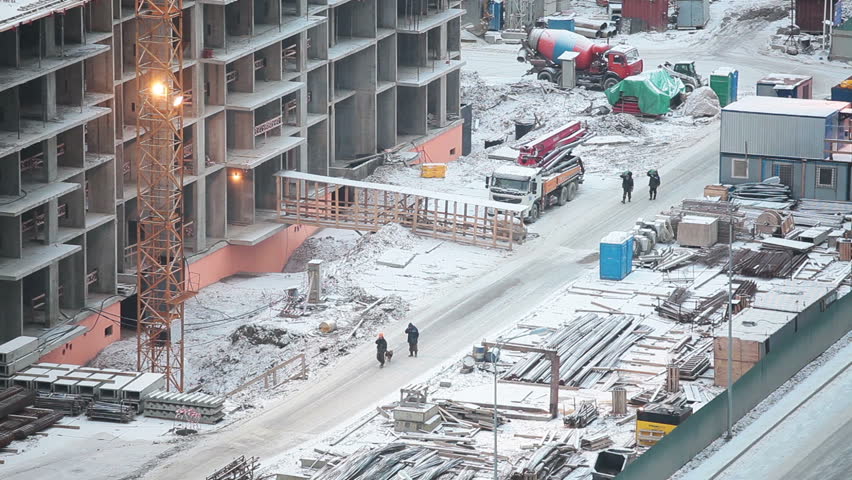Non-freezing cold injury NFCI
Contents |
[edit] Introduction
Non-freezing cold injuries, or NFCIs, are injuries that occur when a person is subject to prolonged exposure to cold temperatures that are insufficient to cause freezing. Most cases of NFCI involve the feet, injured hands and other exposed areas of skin. NFCIs may coexist with freezing cold injuries, or FCIs. Both incidents can generally be prevented with proper preparation for outdoor activities in a cold environment. On construction sites, key preventive measures focus on suitable protective clothing.
[edit] Most common NFCIs
There are two primary NFCI conditions that can occur: chilblains and trench foot. In both cases the affected area experiences restricted blood flow due to exposure to cold temperatures and damp conditions.
Chilblains are caused by repeated exposure to the cold and most commonly occur on the face, hands or feet. Exposure results in constriction of the small arteries and veins in the skin. Subsequent re-warming results in leakage from the blood vessels into the tissues, which in turn causes inflammation and swelling of the skin. Chilblains characteristically develop several hours after exposure to cold temperatures and high levels of humidity.
Trench foot (or cold immersion foot or hand) is associated with injuries sustained in wet conditions at non-freezing temperatures. It can occur following protracted immersion in cold water, usually at 0°C to +10°C, which can result in prolonged peripheral vasoconstriction.
[edit] Four stages of NFCI
The four distinct stages of NFCI are:
- During cold exposure. At this stage, temperatures may cause the affected tissue to become cold and numb. The area may appear bright red, but could then fade to a paler colour; in some instances the area may appear almost white.
- Following cold exposure. This stage occurs during a period of warming. The affected area changes colour from white to pale blue and remains cold and numb. Swelling may begin to appear.
- Hyperaemia. This stage can last for an extended period, ranging from two weeks to three months. The affected area becomes swollen with hot, red and dry skin - possibly with the occurrence of blisters - and intense pain may be experienced. In extreme cases, skin may start to become gangrenous.
- Following hyperaemia. Lasting for weeks or possibly years, the final stage of NFCI may persist throughout the person’s life. Physical signs may no longer be apparent, but damaged areas may be permanently sensitive to cold temperatures; in extreme cases, amputation may be necessary.
[edit] Legal considerations associated with NFCIs
UK law does not prescribe maximum or minimum temperatures. Temperatures in the workplace are governed by the Workplace (Health, Safety and Welfare) Regulations 1992, but this simply obliges employers to provide a ‘reasonable’ temperature.
NFCI is one risk associated with exposure to low temperatures. Where thermal conditions mean that the natural measures necessary to regulate internal human temperature begin to fail, this can be described as ‘thermal stress’, such as cold stress. If there is a risk of thermal stress, this must be assessed and managed. In the case of cold stress, this might include conditions that are below 12°C.
Additional legal requirements can be found in:
- The Personal Protective Equipment at Work Regulations 1992 which cover PPE assessments and requirements for cold working conditions.
- Management of Health and Safety at Work Regulations 1999 which cover risk assessments for cold working conditions.
- Construction (Design and Management) Regulations 2015:Temperature and weather protection (S34) provides suggested parameters - including the provision of protective clothing - for reasonable construction site weather-related working conditions both indoors and out.
[edit] Related articles on Designing Buildings
- CDM 2015.
- Cold stress.
- How to work safely on a construction site in winter.
- Management of Health and Safety at Work Regulations 1999.
- Maximum and minimum workplace temperatures.
- The Personal Protective Equipment at Work Regulations 1992.
- Workplace (Health, Safety and Welfare) Regulations 1992.
[edit] External resources
- Ministry of Defence, Synopsis of Causation: Cold Injury by Dr Adrian Roberts.
Featured articles and news
RTPI leader to become new CIOB Chief Executive Officer
Dr Victoria Hills MRTPI, FICE to take over after Caroline Gumble’s departure.
Social and affordable housing, a long term plan for delivery
The “Delivering a Decade of Renewal for Social and Affordable Housing” strategy sets out future path.
A change to adoptive architecture
Effects of global weather warming on architectural detailing, material choice and human interaction.
The proposed publicly owned and backed subsidiary of Homes England, to facilitate new homes.
How big is the problem and what can we do to mitigate the effects?
Overheating guidance and tools for building designers
A number of cool guides to help with the heat.
The UK's Modern Industrial Strategy: A 10 year plan
Previous consultation criticism, current key elements and general support with some persisting reservations.
Building Safety Regulator reforms
New roles, new staff and a new fast track service pave the way for a single construction regulator.
Architectural Technologist CPDs and Communications
CIAT CPD… and how you can do it!
Cooling centres and cool spaces
Managing extreme heat in cities by directing the public to places for heat stress relief and water sources.
Winter gardens: A brief history and warm variations
Extending the season with glass in different forms and terms.
Restoring Great Yarmouth's Winter Gardens
Transforming one of the least sustainable constructions imaginable.
Construction Skills Mission Board launch sector drive
Newly formed government and industry collaboration set strategy for recruiting an additional 100,000 construction workers a year.
New Architects Code comes into effect in September 2025
ARB Architects Code of Conduct and Practice available with ongoing consultation regarding guidance.
Welsh Skills Body (Medr) launches ambitious plan
The new skills body brings together funding and regulation of tertiary education and research for the devolved nation.
Paul Gandy FCIOB announced as next CIOB President
Former Tilbury Douglas CEO takes helm.
UK Infrastructure: A 10 Year Strategy. In brief with reactions
With the National Infrastructure and Service Transformation Authority (NISTA).























